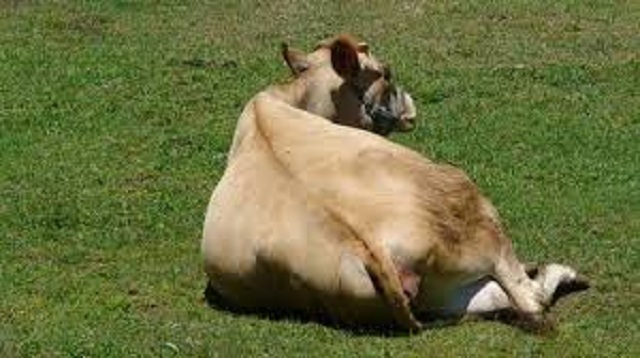
The Sunday News

Mhlupheki Dube
ONCE in a while farmers are faced with animals which after lying down will be unable to rise and stand on their own. An animal which is lying down and cannot stand on its own is called a recumbent animal. Recumbent animals can become common depending on the causes.
Nutrition induced recumbence tends to be common especially during this time of the year and more so during the transition period between an overgrazed veld and the emergence of new grass. There is always a gap of a week and some days between the time effective rains are received and the regeneration of pastures to the size which animals can graze. So during this period there is no dry grass because it was over grazed during the dry season and the little that was left rots due to rains and animals cannot eat it, while the emerging grass is still too small for animals to graze. This is one of the reasons why higher livestock mortalities are recorded from the onset of the rains because animals will be too weak in most cases and they still have to endure that transitional gap. This is the time when most animals get recumbent and farmers in over grazed areas have to deal with large numbers of animals which are recumbent. This article will therefore help understand the issue of recumbence from a broader perspective and how to manage it.
Malnutrition is usually a major cause of recumbence especially in over grazed velds. Pregnant cows are affected mostly due to the fact that they have a high demand for nutrients. Poor-quality feed does not have the protein and energy needed to maintain the good condition of the animals. Animals gradually lose energy until they are too weak to walk short distances or even stand. However, recumbence in animals can also be caused by damaged nerves during a difficult calving. A difficult calving can damage nerves especially in the inner part of thighs and make the cow fail to stand.
However, if there is a large number of animals within the herd which are recumbent at once, a possibility of poisoning should be investigated and this can even be water related of feed related poisoning. Milk fever can also cause recumbence in cows just two to four days after calving down. Also a general fever caused by a sick animal for example causes cattle to be recumbent.
Broken bones, dislocated hips, foot rot, arthritis or any spinal problem can also result in an animal being recumbent.
Deficiency of important minerals such as calcium, magnesium and phosphorus in the body causes an animal to be recumbent.
A lack of phosphorus also causes pica in animals which manifests as an appetite for strange objects such as plastics, clothes and decaying carcasses. Eating decaying carcasses and contaminated vegetation causes botulism in cattle.
Signs of a recumbent animal include an animal lying on its side or chest for a period longer than normal. When it is prompted to stand it may not even try to or it will make unsuccessful attempts.
In some cases recumbence comes gradually such that during first days if the animal is assisted to stand it will stand and even walk and graze. As the disease progresses the animal fails to rise altogether and remain recumbent even when efforts are made to assist it.
Treating a recumbent animal is not easy as being recumbent is a problem in itself as an animal can damage its muscles and nerves. However, animals suffering from malnutrition should receive adequate nursing and feeding care.
They should be given clean water and good-quality feed and also a multivitamin injection. If the animal is lying in the sun, move it to a place where there is enough shade and the surface is not rough. Change the position of the animal by turning it from side to side in the morning, during the day and at night. This is done to minimise muscle damage and to prevent sores on the hip bones. Try to make the animal stand by supporting it under the body with homemade slings made from feed bags.
Specific treatment can be given once the proper diagnosis is made. Consult a veterinarian or an animal health technician.
To prevent occurrence of recumbence in your herd avoid overgrazing your veld. This may be easier said than done especially in communal areas where the veld is jointly owned and used. Veld fires should be avoided at all cost as these destroy your only source of cheap feed and leave you with a huge task of finding commercial feed for your animals which is really expensive.
Also provide supplementary feeding for your livestock during the dry season so that they maintain a reasonable body condition score. Take care when assisting a cow when she is calving down. Keep animals away from places where poisonous plants grow.



